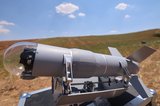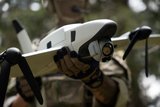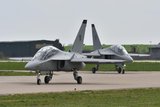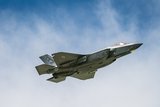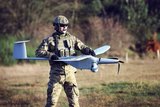NATO funds portable charging technology for Arctic deployment
A US Marine operates a drone in Norway. (Photo: DVIDS)
NATO’s Defence Innovation Accelerator for the North Atlantic (DIANA) recently selected the Canadian company Quaze Technologies to develop an enabling portable, resilient wireless charging solution for drones and unmanned systems to be used in extreme cold environments.
The company was among the winners of the 2025 Arctic Innovation Mobilisation (AIM) competition. It is follow-on activity from the Arctic Warrior Experiment (AWE), which was a technical experimentation event held in Norway, aimed at testing cold-weather gear and other technologies in Arctic conditions.
The 2025 AIM will provide Quaze with €50,000 (US$56,100) to continue to develop, test and refine its solution. Speaking to Shephard, Francis Roy, President and CSO of Quaze, stated that the technology the company is developing can recharge “just about anything”, eliminating “the need to carry a whole lot of batteries or separate charging cables”.
Related Articles
Why the Arctic could be Russia’s next target
How Chinese and Russian ambitions are forcing US posture in the Arctic to shift
Polaris bets on the Arctic market with over-snow reconnaissance vehicle
“We are killing the burden of connecting a wire to the system to recharge,” he explained. “What the military needs is an agnostic technology that can recharge any unmanned systems without human intervention in the most hostile environment.”
The supplier offered its Surface Power Technology to the DIANA competition. The solution has been engineered to enable easy and reliable wireless transmission of energy anywhere on Earth or in space.
The solution is mounted on the equipment that will provide power, such as a car, and turns large surfaces without physical constraint into hubs of wireless for seamless power transmission.
It is powered by magnetic resonance and is scalable to suit various applications, and simultaneously charges multiple devices.
“Right now, it is able to push all the way up to 100 watts. Then anything, no size restriction, can come and grab that power,” Roy remarked.
He explained that it works even in the presence of debris between the transmitter and the receiver. “It is a very resilient system that the operator can rely on and maximise the value of their unmanned systems.”
The technology was on display at the SOF Week 2025 exhibition in Tampa, Florida. On the show floor, the supplier demonstrated its ability to wirelessly recharge equipment for dismounted soldiers.
More from Air Warfare
-
![What might next-generation military aircrew training look like?]()
What might next-generation military aircrew training look like?
Changing roles for combat aircraft fleets, the rise of simulation and LVC technologies, and the increasing cost of flight hours could all be leading to a paradigm shift in military pilot training.
-
![2025 air market review: European defence independence, next-gen tech and export concerns dominate]()
2025 air market review: European defence independence, next-gen tech and export concerns dominate
This year’s (geo)political turmoil has challenged many long-prevailing assumptions, leading to far-reaching consequences for air forces and their supplier bases in industry worldwide – with five key trends in review for 2025.
-
![Poland air report: Drones, transport aircraft and tankers dominate potential procurement plans]()
Poland air report: Drones, transport aircraft and tankers dominate potential procurement plans
With a rising defence budget and equipment list, Poland’s air market is set to grow as the country continues to modernise its transport and helicopter fleets while seeking out uncrewed aerial vehicles and loitering munitions.
-
![Portugal signals interest in establishing A-29N final assembly line]()
Portugal signals interest in establishing A-29N final assembly line
As the launch customer for the NATO-configured variant, Portugal also took delivery of the first five A-29N aircraft from its order for 12, placed in 2024.
-
![Podcast: Critical Care episode 5 - Sustaining Europe’s frontline from Heidelberg]()
Podcast: Critical Care episode 5 - Sustaining Europe’s frontline from Heidelberg
As Europe ramps up defence investment in the wake of the Ukraine crisis, the spotlight is turning to how nations sustain their growing fleets.







